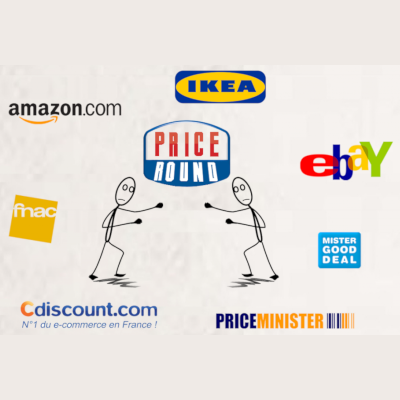“Pricing is one of the main drivers of an e-commerce site in search of profitability.”
Indeed, a simple variation of 5% to 10% of the price of certain products may have an important impact on the profitability of the site. Thus, the pricing policy often implemented by online retailers is a strategy of penetration with very affordable low prices. However, this practice turns vicious by the tendency to limit margins to decide the cheapest price. Why is this dangerous? The limitation of margins results in lower profits which weakens the site financially, creating rough and aggressive competition. In addition, the price policy must reflect the image of e-shopping, and above all, remain consistent over time.
Playing with pricing policy
Despite the complexity in the implementation of an effective pricing policy, there are many actions one can take to alleviate the problem.
- A first interesting approach is the establishment of loss leaders. This strategy helps to attract customers through a product sold cheaply that does not offer much margin, and it is through the association with more profitable references that an e-retailer will benefit from the overall purchase of the customer. Choosing to price cheaper on the flagship products of the site and more expensive on others forms part of this loss leader strategy, and above all it gives the e-retailer the image of being cheap on the market. At this point, if the customer is satisfied with the quality of service offered by the site, they will not go to the competition.
- It goes without saying that in order for this strategy to work properly, a bond of trust must be developed between the client and the e-retailer. This is the key factor that allows you to play with prices. From the moment the client knows the site and its control process, he will not waste time with the unfamiliar competition.
- On the other hand, it is important to know how to differentiate in a market where competitive intensity is so important. Develop an impeccable customer service, offering timely delivery or exclusive offers that strengthen and add value to the site and its image. Some other actions are possible as well, such as offering that a percentage of their purchase will be donated to charity, or offering free shipping to purchases made above a certain amount.
Don’t forget to add in some active monitoring
The possible actions mentioned above are proven relevant if, and only if, price monitoring is in place.
The continuous watch of competition prices is necessary to apply an effective pricing policy, to respond to adverse business actions, and to have a global vision of the market in order to define its position and future actions.
Such price monitoring tools offer the possibility to centralize all this information without having to suffer the impact of Big Data. You can view real-time changes in price curves, interest rate margins and inventory of your site and that of the competition, giving you an undeniable competitive advantage.
In conclusion
To end on a first recommendation, test your pricing strategy over different periods such as during sales or holidays, in order to define whether your actions have a positive or negative impact on your business.
Written by Laurent Amaoua, PAARLY: Pricing Intelligence and Competitor Monitoring
